
Photojournalism is journalism that uses images to tell a news story. It usually only refers to still images, but can also refer to video used in broadcast journalism. Photojournalism is distinguished from other close branches of photography by having a rigid ethical framework which demands an honest and impartial approach that tells a story in strictly journalistic terms. Photojournalists contribute to the news media, and help communities connect with one other. They must be well-informed and knowledgeable, and are able to deliver news in a creative manner that is both informative and entertaining.

Hippolyte Bayard was a French photographer and pioneer in the history of photography. He invented his own process that produced direct positive paper prints in the camera and presented the world's first public exhibition of photographs on 24 June 1839. He claimed to have invented photography earlier than Louis-Jacques Mandé Daguerre in France and William Henry Fox Talbot in England, the men traditionally credited with its invention.

Stock photography is the supply of photographs that are often licensed for specific uses. The stock photo industry, which began to gain hold in the 1920s, has established models including traditional macrostock photography, midstock photography, and microstock photography. Conventional stock agencies charge from several hundred to several thousand US dollars per image, while microstock photography may sell for around US$0.25 cents. Professional stock photographers traditionally place their images with one or more stock agencies on a contractual basis, while stock agencies may accept the high-quality photos of amateur photographers through online submission.
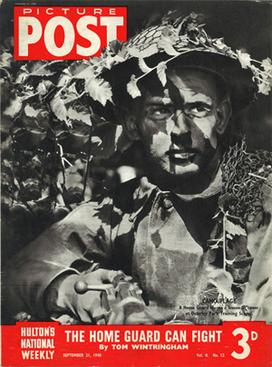
Picture Post was a photojournalistic magazine published in the United Kingdom from 1938 to 1957. It is considered a pioneering example of photojournalism and was an immediate success, selling 1,000,000 copies a week after only two months. It has been called the UK's equivalent of Life magazine.

Fashion photography is a genre of photography that portrays clothing and other fashion items. This sometimes includes haute couture garments. It typically consists of a fashion photographer taking pictures of a dressed model in a photographic studio or an outside setting. It originated from the clothing and fashion industries, and while some fashion photography has been elevated as art, it is still primarily used commercially for clothing, perfumes and beauty products.

Arnold Abner Newman was an American photographer, noted for his "environmental portraits" of artists and politicians. He was also known for his carefully composed abstract still life images. In 2006, he was inducted into the International Photography Hall of Fame and Museum.
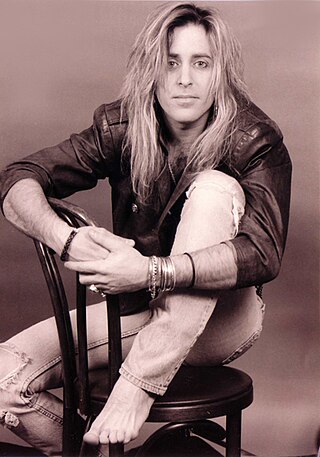
Mike Pont is an American singer, songwriter, and celebrity photographer. As a singer he has sung for several bands, including Hotshot, Trouble, The Mike Pont Band, Danger Danger, and the Gangsters Of Love.
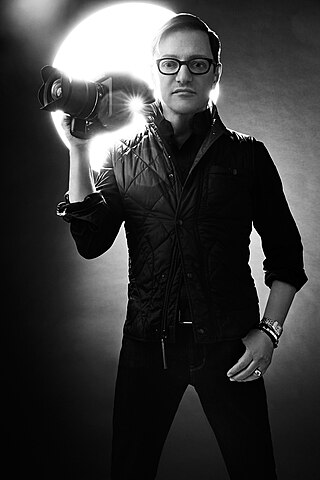
Matthew Russell Rolston is an American artist, photographer, director and creative director, known for his lighting techniques and detailed approach to art direction and design. Rolston has been identified throughout his career with the revival and modern expression of Hollywood glamour.

Graciela Iturbide is a Mexican photographer. Her work has been exhibited internationally, and is included in many major museum collections such as the San Francisco Museum of Modern Art and The J. Paul Getty Museum.
Luc Delahaye is a French photographer known for his large-scale color works depicting conflicts, world events or social issues. His pictures are characterized by detachment, directness and rich details, a documentary approach which is however countered by dramatic intensity and a narrative structure.
Photo psychology or photopsychology is a specialty within psychology dedicated to identifying and analyzing relationships between psychology and photography. Photopsychology traces several points of contact between photography and psychology.

Guerrillero Heroico is an iconic photograph of Marxist revolutionary Che Guevara taken by Alberto Korda. It was captured on March 5, 1960, in Havana, Cuba, at a memorial service for victims of the La Coubre explosion. By the end of the 1960s, the image, in conjunction with Guevara's subsequent actions and eventual execution, helped solidify the leader as a cultural icon. Korda has said that at the moment he shot the picture, he was drawn to Guevara's facial expression, which showed "absolute implacability" as well as anger and pain. Years later, Korda would say that the photograph showed Che's firm and stoical character. Guevara was 31 years old at the time the photograph was taken.

JR is the pseudonym of a French photographer and street artist. JR stands for the initials of JR's first name, which is Jean-René.
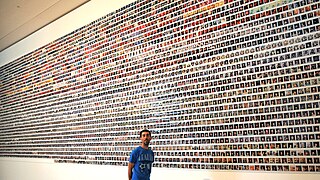
Marc Tasman is an American Intermedia artist who works in a variety of media, including interactive art, performance art, video art, and photography. He is currently a Senior Lecturer at the University of Wisconsin–Milwaukee in the Department of Journalism, Advertising, and Media Studies.
Anthony Friedkin is an American photographer whose works have chronicled California's landscapes, cities and people. His topics include phenomena such as surf culture, prisons, cinema, and gay culture. Friedkin’s photographs have been exhibited in the Los Angeles County Museum of Art and the J. Paul Getty Museum. His photographs are included in major Museum collections: New York's Museum of Modern Art, The J. Paul Getty Museum and others. He is represented in numerous private collections as well. His pictures have been published in Japan, Russia, Europe, and many Fine Art magazines in America.
David Attie was a prominent American photographer, widely published in magazines and books from the late 1950s until his passing in the 1980s. He was one of the last great proteges of legendary photography teacher and art director Alexey Brodovitch. Attie worked in a wide range of styles, illustrating everything from novels to magazine and album covers to subway posters, and taking now-iconic portraits of Truman Capote, Bobby Fischer, Lorraine Hansberry, and many others. He also created the first-ever visual depiction of Holly Golightly, the main character in Breakfast at Tiffany's, when he illustrated the Capote novella's first appearance in Esquire Magazine. He was best known in his lifetime for his signature photo montages—an approach he called "multiple-image photography": highly inventive, pre-Photoshop collages that he made by combining negatives in the darkroom. His work has received new attention with a pair of posthumous books: the well-reviewed 2015 publication of his Capote collaboration "Brooklyn: A Personal Memoir, With The Lost Photographs of David Attie," and the 2021 collection of his behind-the-scenes photographs from the very first season of Sesame Street, "The Unseen Photos of Street Gang." He has been the subject of several solo exhibits in recent years, including a two-year retrospective at the Brooklyn Historical Society. One recent critic wrote that even decades later, "his explorations of photomontage remain durably inspired, innovative, and visually dynamic."

Laura Boushnak is a Kuwaiti-born Palestinian photographer whose work is focused on women, literacy, and education reform in the Arab world. For her ongoing documentary project "I Read I Write" she photographed girls and women changing their lives with education in Egypt, Yemen, Kuwait, Jordan and Tunisia.
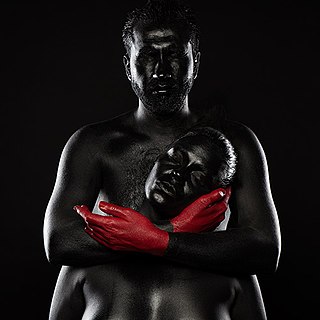
Low-key photography is a genre of photography consisting of shooting dark-colored scenes by lowering or dimming the "key" or front light illuminating the scene, and emphasizing natural or artificial light only on specific areas in the frame. This photographic style is usually used to create a mysterious atmosphere, that only suggests various shapes, often graphic, letting the viewer experience the photograph through subjective interpretation and often implies painting objects or the human body with black non-toxic dyes or pigments.

Balazs Gardi is a Hungarian-born, American-based photographer. In 2008, Gardi received two 1st Prizes in the World Press Photo Awards and won the Photojournalism prize in the Bayeux-Calvados Award for War Correspondents for his work from Afghanistan.


















